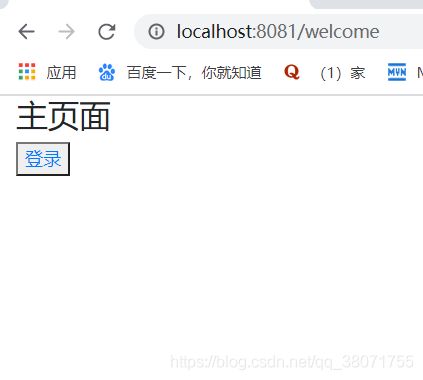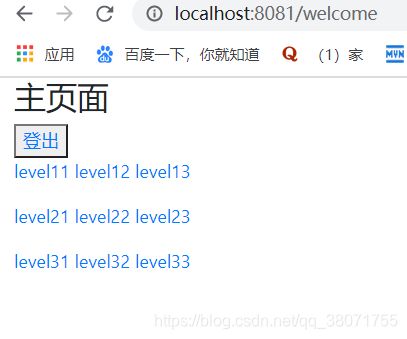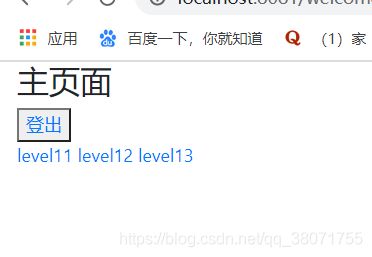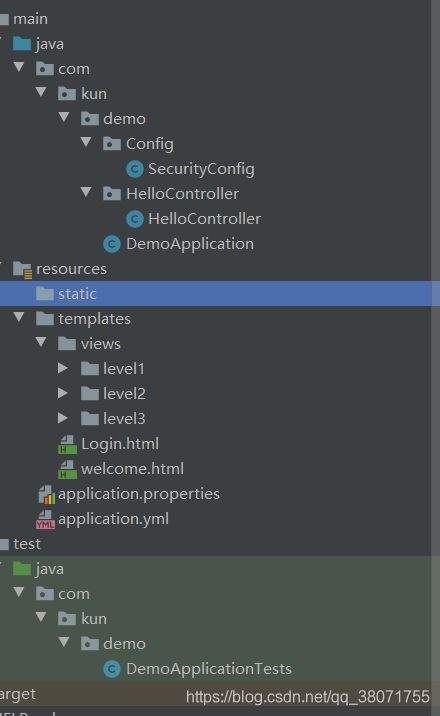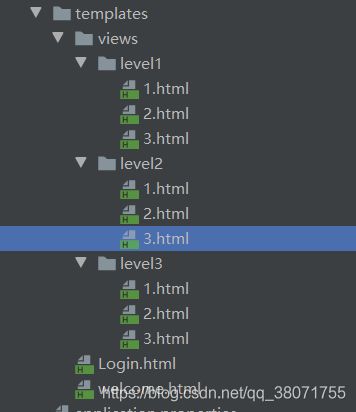Springboot+SpringSecurity+Thymeleaf实战(附源码),shi上最简单的SpringSecurity权限框架
先看效果
在没有认证的时候登陆是这样的
点击登陆之后,点击登陆我之后,下次登陆就回直接使用账号密码。
登陆成功之后,这是拥有全部权限的账号密码情况下,登陆按钮消失,登出按钮显示出来,显示所有的页面
登陆只有一个权限的,只显示权限可以看的到的页面。点击登出,回退到登陆页面,并且清除数据。
开始
废话少说,直接上干的。
使用东西:Springboot、SpringSecurity、Thymeleaf
实现功能:登陆验证、权限验证、记住我、根据验证显示按钮、根据权限去验证可查看的内容。
直接在类中硬编码的账号密码(未使用数据库),我将在最后附上源码。
首先
架构是这样婶儿的,了解spingboot,一眼就懂,不多BB
个人认为SpringSecurity比shiro简单很多,不,简单太多了,最主要的核心代码在SecurityConfig。
引用到的jar包
//springsecurity4整合thymeleaf的包
org.thymeleaf.extras
thymeleaf-extras-springsecurity4
3.0.2.RELEASE
//thymeleaf包
org.springframework.boot
spring-boot-starter-thymeleaf
//security包
org.springframework.boot
spring-boot-starter-security
2.3.1.RELEASE
org.springframework.boot
spring-boot-starter-web
根据以下目录创建页面,内容随意,也可以直接使用我的静态,你问我好看吗,当~然不好看,白嫖还要什么自行车
在主要页面需要引入thymeleaf和Security的依赖,千万记得,不然不能使用,别问我咋知道的。
Login页面中是单纯的登陆表单
Welcome页面是主页面,主要功能是指向每个页面,
其他123页面随意,只是自己知道内容即可
上面整理好之后,就可以写Controller了
@Controller
public class HelloController {
@RequestMapping("/toLogin")
public String helloword(){
return "Login";
}
@RequestMapping({"/welcome"})
public String welcome(){
return "welcome";
}
@RequestMapping("/level1/{id}")
public String level1(@PathVariable("id") int id){
return "views/level1/"+id;
}
@RequestMapping("/level2/{id}")
public String level2(@PathVariable("id") int id){
return "views/level2/"+id;
}
@RequestMapping("/level3/{id}")
public String level3(@PathVariable("id") int id){
return "views/level3/"+id;
}
}
以上都是环境了,接下来,重点来了,上文说,最关键的是SecurityConfig中,于是我把用法和注解都写在注释中了,注意Security的是链式编程,就是你一个方法在不结束的情况下可以加and()一直点直到结束加上;就完成了。
@EnableWebSecurity // 开启WebSecurity模式 继承Security的父类
public class SecurityConfig extends WebSecurityConfigurerAdapter {
//授权的规则
@Override
protected void configure(HttpSecurity http) throws Exception {
//具体不知道干啥用的
http.authorizeRequests()
//设置主页面可全部访问,具体方法为permitAll
.antMatchers("/welcome").permitAll()
//只要有vip1的权限就可以访问/level1/* 下的所有接口
.antMatchers("/level1/*").hasRole("vip1")
.antMatchers("/level2/*").hasRole("vip2")
.antMatchers("/level3/*").hasRole("vip3");
//开启登录认证
http.formLogin()
//自定义的登录页面中上传的指定上来的账号,可以根据数据库的名自己定义
.usernameParameter("username")
//自定义的登录页面中上传的密码
.passwordParameter("password")
//自定义指定自己要登录的页面
.loginPage("/toLogin")
//处理登录页面的接口,我这里是直接用的SpringSecurity提供的
.loginProcessingUrl("/login")
//登录成功后跳转的位置
.defaultSuccessUrl("/welcome");
//关闭Security提供的CSRF防止共计
http.csrf().disable();
//自定义登出成功后跳转的页面
http.logout().logoutSuccessUrl("/toLogin");
//rememberMe记住我功能 //后面是定义记住我上传上来的name
http.rememberMe().rememberMeParameter("remember");
}
//认证
@Override
protected void configure(AuthenticationManagerBuilder auth) throws Exception {
//使用认证
// inMemoryAuthentication()是在内存中认证
// 正常应该在数据库中认证
// 从SpringSecurity5开始密码就必须加密,提供了很多方法我这里使用的是BCryptPasswordEncoder
auth.inMemoryAuthentication().passwordEncoder(new BCryptPasswordEncoder())
.withUser("wangkun").password(new BCryptPasswordEncoder().encode("123123")).roles("vip1","vip2","vip3")
.and()
.withUser("admin").password(new BCryptPasswordEncoder().encode("123123")).roles("vip1","vip2")
.and()
.withUser("root").password(new BCryptPasswordEncoder().encode("123123")).roles("vip1");
}
}
最后要注意的点是在html页面中的几个写法,就是在整合SpringSecurity和thymeleaf中用于判断是否登陆,或者登陆上之后有没有权限看到自己能看到的东西,我也把解释写入注释中了。
OK,这就完了。
乾坤未定,你我皆为黑马!
加油。
